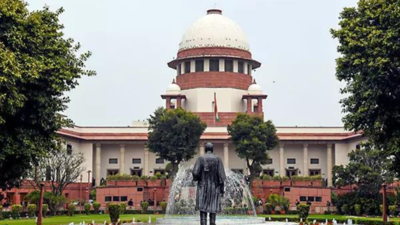
Common Council Member Zeneta Everhart grew up on the East Side and knows firsthand what it’s like to have limited access to fresh, healthy food. The issue of food access is “personal” to her. “This is really the development of our children and our babies and of our future.
Our future is based upon whether or not our children have food to eat,” Everhart said. That’s why Everhart was at the side of U.S.
Sen. Kirsten Gillibrand at the Delavan-Grider Community Center in January as the senator announced her plan to increase funding for the Healthy Food Financing Initiative and use some of the funding to build more grocery stores on Buffalo’s East Side. U.
S. Sen. Kirsten Gillibrand, second from left, at the Delavan-Grider Community Center in Buffalo.
Common Council Member Zeneta Everhart is at her left. Gillibrand has proposed legislation that would incentivize fresh food retailers in underserved communities. Gillibrand is working on securing up to $50 million in funding that would help incentivize grocery stores to open in underserved areas .
Her office says she is in conversation with nonprofits and private grocer chains. Gov. Kathy Hochul also pledged $10 million to develop and upgrade supermarkets , food co-ops, farm stands and food stores in underserved areas throughout the state.
The application period is open through Nov. 22. The lack of supermarkets and the attendant lack of healthy food in stores in certain parts of communities has come to be known as “food deserts.
” It has been an issue on the East Side for years but became more widely known to the community at large following the May 14, 2022, racist massacre at Tops supermarket on Jefferson Avenue. The shooting forced the store’s closing for two months and removed one of the only options for people looking for healthy food options. Everhart believes it is “crucial to the development of a whole community” to incentivize bigger grocers to build stores on the East Side.
“When you start building economic development in a community, other businesses follow automatically, and then housing follows, and you know, all these different things start to stack on top of each other,” Everhart said. “It’s about the government saying, ‘Look, we are at the table on this food access issue, and we want our grocers to be at the table. If we’re willing to invest, we want our businesses to also invest.
’” The Healthy Food Financing Initiative (HFFI) is funded through the federal Farm Bill. Gillibrand is trying to double its funding to $50 million in the current Farm Bill, which has not yet been passed. HFFI funding can be used to financially incentivize new grocery stores to open, as well as help existing stores expand or renovate, and fund programs that improve healthy food options at food stores.
Hochul’s Food Access Expansion Grant Program has a similar goal: to fund the development and expansion of food retail. Both programs are meant to help businesses overcome the barriers in starting or expanding a grocery store. Tops on Jefferson Avenue received financial incentives when it opened in 2003.
Do financial incentives work? There’s local precedent for financially incentivizing grocery stores to open in food deserts, or what some food access leaders call “food apartheid.” When Tops Markets opened its Jefferson Avenue and Niagara Street locations in the early 2000s, it received $5.2 million in loans and grants from the city of Buffalo, Empire State Development Corp.
and the federal Enterprise Community Zone program, which was a federal program aimed at revitalizing underserved communities, The Buffalo News reported at the time . More recently, a food cooperative with plans to build a $4.8 million market at 238 Carlton St.
in the Fruit Belt received the majority of its funding from governmental incentives . The African Heritage Food Co-op was given $3 million from Hochul and Empire State Development, as well as $120,000 from HFFI and $1.5 million from historic tax credits.
Braymiller Market, an independent grocery store with one other location in Hamburg, opened in 2021 to fill a gap in downtown Buffalo, where it is the only grocery store for a couple of miles. It received tax incentives from Erie County, as well as a $561,000 forgivable loan from the city of Buffalo last year as it struggled to survive. Financial incentives aren’t a perfect solution.
Grocery stores still struggle to make it, even when they receive financial help. A ProPublica investigation published in August reported that many grocery stores that open in food deserts struggle to thrive, despite financial support from government programs. ProPublica found that five out of 24 stores helped by the Healthy Food Financing Initiative in 2020 and 2021 had already closed, while six had yet to open for lack of funding or site selection.
Independent grocery stores struggled to keep their prices competitively low compared to national chains, according to ProPublica. If prices aren’t competitive, it’s difficult to entice new customers to change their previous shopping habits, ProPublica reported. Braymiller Market, for example, changed its food offerings since opening.
Owner Stuart Green switched from selling more expensive national brands to affordable generic brands. Upfront funding to help with a grocery store’s startup costs is “necessary” but “not sufficient,” according to Charles Lindsey, associate professor of marketing at the University at Buffalo. On a macro level, independent stores need help competing with the prices of large grocery chains who are able to offer much lower prices, Lindsey said.
Dr. Samina Raja, a University at Buffalo professor of urban and regional planning and principal investigator of the school’s Food Lab, said it is “definitely important” for local, state and federal governments to invest in “food as public infrastructure.” “Such a program is not meant to put money into the pockets of a corporate grocery chain,” Raja said.
“It’s meant to serve the people in that neighborhood.” Raja believes financial incentives should include community benefits agreements outlining specific ways in which the business will help the community, such as by hiring people from the surrounding neighborhoods and hosting apprenticeship programs. (The Buffalo Bills, for example, signed a community benefits agreement after accepting $850 million in public funding.
) Procurement policies should also be in place, according to Raja, that ensure grocers buy locally produced food. “You can put a grocery store in a neighborhood, but you also have to make sure that people in that neighborhood benefit from wealth generation and income tied to that government incentive,” Raja said. New grocery stores should also collaborate with small businesses by selling their products, Everhart said.
The Jefferson Avenue Tops, for example, is one of several local grocery stores to sell local bakery Cake Crazy’s sweet potato pie. Shetice Jackson recently told The News that her growing partnerships with local grocery stores enabled her to invest $100,000 into new equipment and infrastructure for her Cheektowaga bakery. “I want to see a grocer that’s not just going to come in as a grocery store, but as a community partner,” Everhart said.
“That’s what a grocer is to me. It’s groceries ..
. It is getting access to food for our residents, but it’s also a piece of the community.” U.
S. Sen. Kirsten Gillibrand speaks with Marie Cannon, commissioner for Erie County Department of Social Services, left, after announcing proposed legislation that would incentivize grocers to locate in food deserts.
Where should a new grocery store go? A lot of the East Side lacks a grocery store. The following neighborhoods lack a supermarket: Kensington-Bailey, Kenfield, Fillmore-Leroy, Delavan-Grider, Hamlin Park, MLK Park, Genesee-Moselle, Lovejoy, Fruit Belt, Pratt-Willert and Ellicott, according to the UB Food Lab’s East Buffalo Food and Health Equity Dashboard , which was updated in summer 2023. The U.
S. Department of Agriculture’s food research atlas also identifies most of those neighborhoods as food deserts. However, there are more small-scale food retailers in those neighborhoods.
A growing number of ethnic grocery stores, which are often stocked with fresh produce and whole foods, are helping to bridge the gap . “I mean, listen, I can sit down with any grocer and I can tell them exactly where they need to set up shop, because there’s a lot of options,” Everhart said. According to Gillibrand’s office, she should have the chance.
A spokesperson for Gillibrand said that her office will consult local experts and advocates on specifically where a grocery store should open on the East Side. Raja agrees that community input is necessary to understanding where a store should locate and what it should offer to serve the real needs of a community. “We have neighborhoods that could be amazing, walkable neighborhoods, but we need somebody to come in and make that a reality for us and start with grocery stores,” Everhart said.
“The most basic thing that we need to survive as humans is food.” Satisfy your cravings With our weekly newsletter packed with the latest in everything food. {{description}} Email notifications are only sent once a day, and only if there are new matching items.
.














